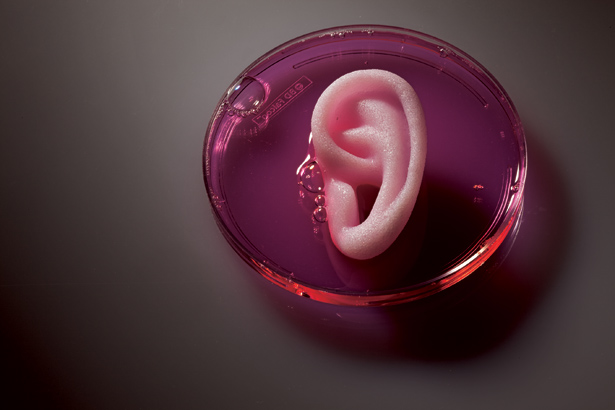

More than 100,000 people are waiting for organ transplants in the U.S. alone; every day 18 of them die. Not only are healthy organs in short supply, but donor and patient also have to be closely matched, or the patient’s immune system may reject the transplant. A new kind of solution is incubating in medical labs: “bioartificial” organs grown from the patient’s own cells. Thirty people have received lab-grown bladders already, and other engineered organs are in the pipeline.
The bladder technique was developed by Anthony Atala of the Wake Forest Institute for Regenerative Medicine in Winston-Salem, North Carolina. Researchers take healthy cells from a patient’s diseased bladder, cause them to multiply profusely in petri dishes, then apply them to a balloon-shaped scaffold made partly of collagen, the protein found in cartilage. Muscle cells go on the outside, urothelial cells (which line the urinary tract) on the inside. “It’s like baking a layer cake,” says Atala. “You’re layering the cells one layer at a time, spreading these toppings.” The bladder-to-be is then incubated at body temperature until the cells form functioning tissue. The whole process takes six to eight weeks.
Solid organs with lots of blood vessels, such as kidneys or livers, are harder to grow than hollow ones like bladders. But Atala’s group—which is working on 22 organs and tissues, including ears—recently made a functioning piece of human liver. One tool they use is similar to an ink-jet printer; it “prints” different types of cells and the organ scaffold one layer at a time.
Other labs are also racing to make bioartificial organs. A jawbone has sprouted at Columbia University and a lung at Yale. At the University of Minnesota, Doris Taylor has fabricated a beating rat heart, growing cells from one rat on a scaffold she made from the heart of another by washing off its own cells. And at the University of Michigan, H. David Humes has created an artificial kidney from cells seeded onto a synthetic scaffold. The cell-phone-size kidney has passed tests on sheep—it’s not yet implantable, but it’s wearable, unlike a dialysis machine, and it does more than filter toxins from blood. It also makes hormones and performs other kidney functions.
